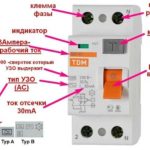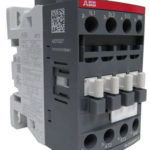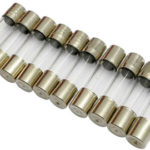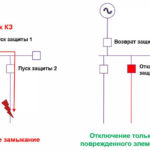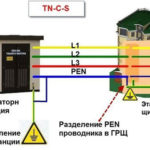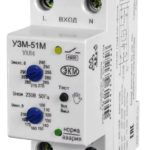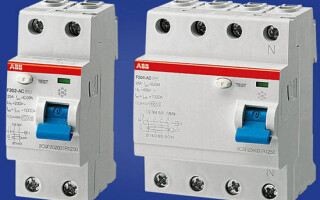If you paid attention to this article, then probably not so long ago you asked yourself the question - “What is an RCD and what is its purpose?”. We will try to answer this question in as much detail as possible. Well, for starters, let's say that the abbreviation RCD stands for residual current device.
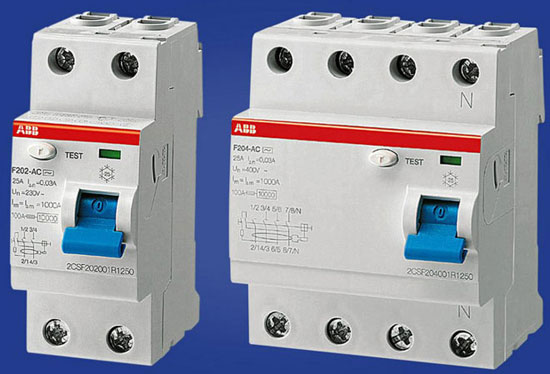
Content
What is an RCD in electrical
Despite the fact that today the electrical wiring is maximally protected from contact with people and sad consequences, there is no escape from leaks. This is where the RCD will become an indispensable assistant. The device reacts with lightning speed to an increased current value at the place of leakage and cuts off the power supply.
RCD - this is one of the main "cogs" in the protective automation of the current electrical networks. The device switches electrical circuits and protects them from currents that flow through conductive paths that are undesirable under standard conditions. This will increase the chances that your home or business will be protected from fires and no one will be harmed by the discharge of current.
Note that this device has the function of turning on or off electrical circuits. In other words, he can switch them. Accordingly, the device is switching.
Why install an RCD
Many consumers have heard about the existence of such a miracle device as an RCD, but not everyone knows what it is for. It is possible to understand the general principles of the functioning of the unit even without deep knowledge in electricity. Until recently, RCDs were not used in residential buildings. But nowadays everything has changed, and now devices are increasingly found in apartments, so it’s worth learning more about them.
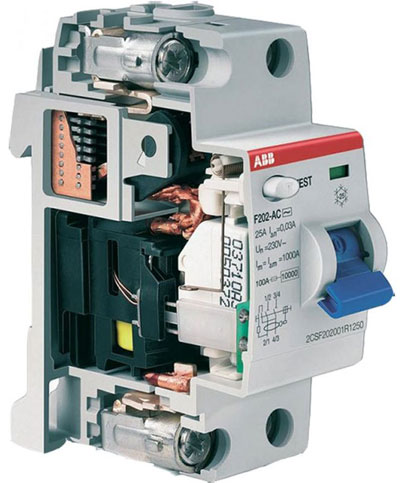
As already mentioned, RCDs are installed in order to prevent current leakage, leading to ignition of wiring and fires. In addition, the RCD will protect you from electric shock, which can lead to significant health problems or, God forbid, death when in contact with bare wires and conductive sections of electrical equipment.
NOTE! The RCD differs from automatic devices that protect wiring from overloads and short circuits, its purpose is to significantly increase the security of people.
The principle of operation of the RCD
The operation of the device is based on fixing the leakage current to the "ground" and turning off the power grid in the event of such an emergency.The device detects the presence of leakage only by the difference between the currents: those that left the device and those that returned back.
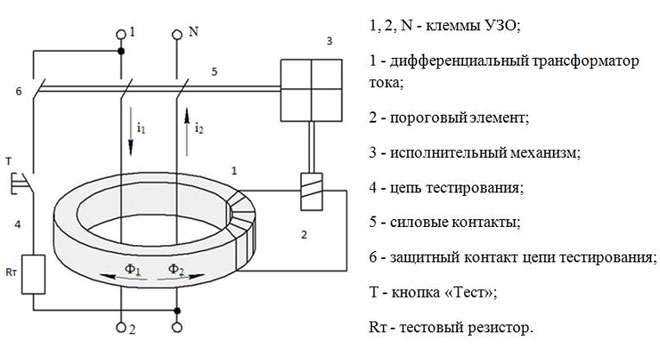
If everything is in order with the power grid, then the currents are identical in magnitude, but differ in direction. As soon as a leak appears - for example, you touched a wire that is not 100% insulated - part of the current goes "to the ground" along another circuit (in this case, through the human body). As a result, the current returned to the RCD through the neutral will be less than the current that came out.
The same thing happens if the insulation is damaged in one of the electrical appliances. Then the housing or other part is under tension. Touching them, a person creates another contour "to the ground". In this case, part of the current will move along it, that is, the balance will collapse.
Of course, if the insulation is damaged, then the branch circuit can appear without the participation of the human body. In this situation, the device will also respond 100% and save the network section from sad consequences such as overheating and fire.
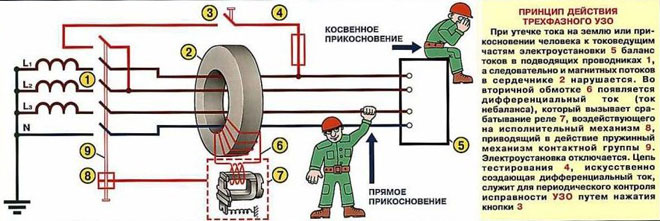
When is an RCD required?
The device is indicated for installation when there is a need to protect group lines providing power to plug-in sockets for portable electrical appliances. It is imperative to install an RCD if the circuit breaker or fuse does not provide an auto-off time of 0.4 seconds, taking into account the rated voltage of 220 V due to low current values short circuit.
NOTE! Recommended use differential automaton, which is a single RCD device with an auto switch that reliably protects against overcurrent and leakage.
In addition, it is recommended to install an RCD if there are people in your family who “love” to carelessly handle electrical wiring. The simplest case: a person drills a wall, while leaning his bare foot on the battery, and touches the phase wire. He flies along the chain "metal case of the drill - arm - chest - leg - battery" and leads to terrible consequences: heart paralysis or respiratory arrest (sometimes all together). If you have an RCD installed, it will instantly “understand” that part of the current has not returned, and immediately turn off the electricity. Yes, electric shock will occur, but the discharge will be minimal.
When does RCD not help?
However, RCDs should not be considered a panacea for any troubles with electricity. The device is not so smart as to understand what exactly is included in the electrical circuit - a light bulb or a person. Shutdown will only occur if there is a leak.
RCD does not save from overvoltage, incl. from impulse, as well as from low voltage, which "kills" electric motors - in the refrigerator, washing machine, and so on.
The unit also does not protect against short circuits. This task is performed by a circuit breaker or differential machine.
How many RCDs need to be installed?
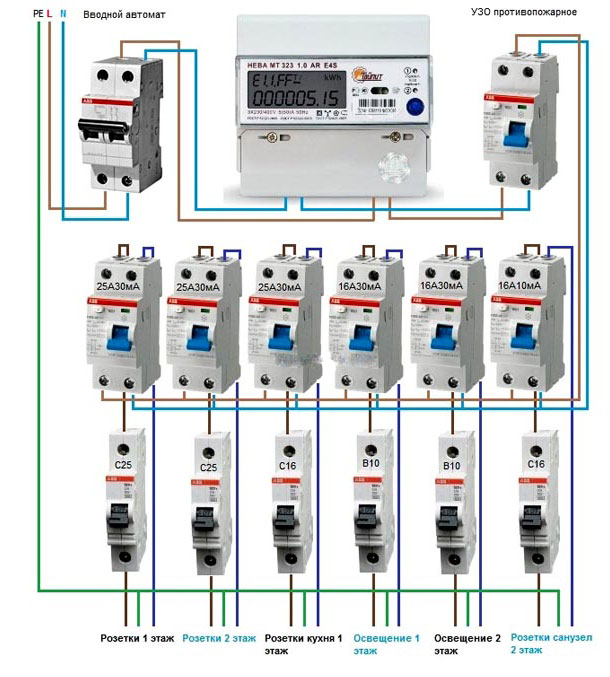
To determine the exact number of RCDs required for a particular room, you will need a specialist who can make the appropriate calculations. For example, in a 1-room apartment, one such device is most likely enough, designed for a leakage current of 30 mA. But in an apartment with four rooms, with 15 groups of outlets, you will need at least five RCDs, as well as one device for the entire lighting group, an electric stove and a water heater.
It is usually assumed that one group of electrical appliances is one 30 mA residual current device plus one 100 or 300 mA fire protection RCD.
NOTE! In order to control the wiring as a whole, it is recommended to install one common RCD with a rated breaking current of 300 mA at the entrance to a private house in addition to the calculated ones.
When is the installation of an RCD impractical?
Sometimes it just doesn't make sense to install a device. One such situation is the presence of old and decrepit wiring. The ability of an RCD to detect a leak can be a headache if the device starts to work unpredictably (This is exactly what happens with bad wiring.). In this case, the best solution would be to put the RCD not in the power supply circuit of the apartment as a whole, but in places with increased danger for using sockets.
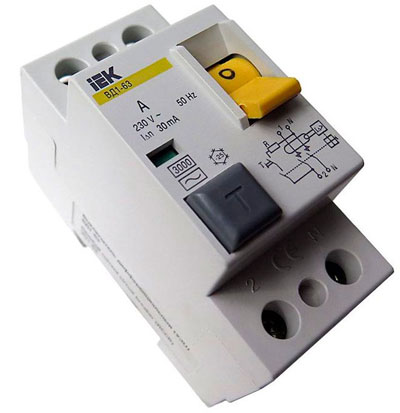
It also makes no sense to buy low-quality RCDs. On the modern market, you can find not only original devices, but also the widest range of fakes of unknown origin. Many of these devices are made "on the knee around the corner." The use of such devices is completely unacceptable and impractical. Before buying, carefully study the technical documentation and quality certificates of the purchased unit.
It does not make sense to install the device in lines that provide voltage to stationary equipment and lamps, as well as in general power networks.
Device
The RCD device assumes the presence of:
- leakage sensor;
- polarized magnetic relay.
The operation of the device is based on laws based on incoming and outgoing electricity in closed circuits with extremely large loads.This indicates that the current should have only one value, regardless of the phase of passage.
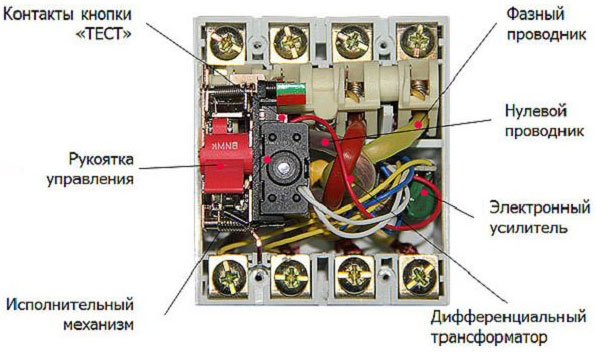
There are three magnetic coils inside the device. A phase passes through the first, zero through the second. The current creates magnetic fields at the input and output of the coils of the device.
If everything works as it should, the mutual fields cancel each other out. If on one of the coils there is an imbalance, that is, a current leakage is formed, then this will lead to the action of the third coil, which has a relay to turn off the power.
Main technical characteristics
Each RCD has a certain set of technical parameters that should be studied before purchase:
- manufacturer;
- model name;
- operating current - the limiting value of the current that the device can switch;
- power supply parameters (voltage and frequency);
- leakage current - the maximum value of the leakage current to which the device reacts;
- RCD type;
- operating temperature range;
- rated conditional short-circuit current;
- RCD device diagram.
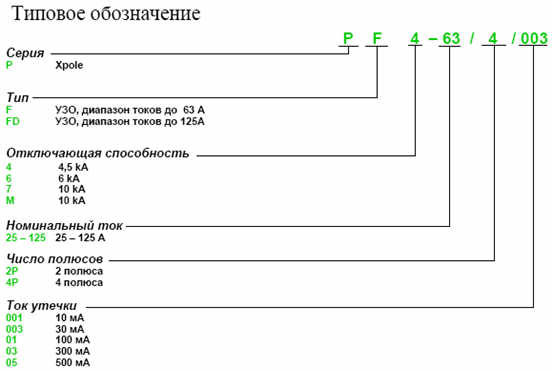
Deciphering the marking
The marking is applied to the RCD body, which makes the choice of the desired model more convenient and easy. First of all, the manufacturer is indicated, but there is other important information there:
- "RCD" or "VD" - means that this is a residual current device;
- 16A - the maximum current for which the contacts of the product and other internal elements are designed;
- In 30mA - leakage current at which the RCD will operate;
- 230V and 50Hz - voltage and frequency at which the unit operates;
- S - RCD selective;
- "~" sign - this means that the device is triggered by AC leakage.
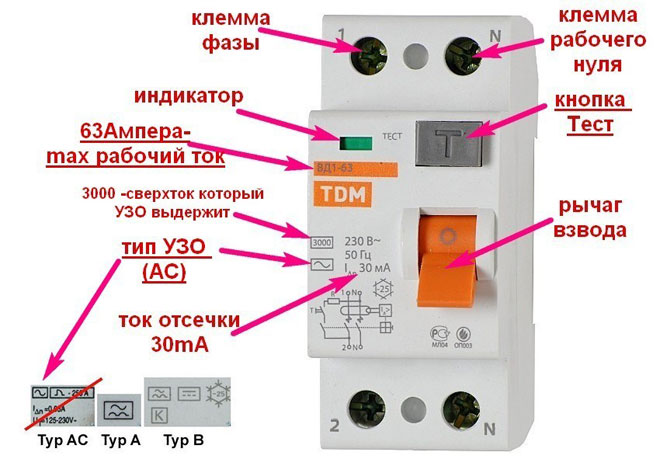
In addition, there are inscriptions next to each contact for the correct RCD connection:
- N(above) - an incoming neutral conductor is connected to this contact;
- 1(above) - the incoming phase conductor is connected here;
- 2 (from below) - a phase conductor is connected to this place, which goes to the load;
- N(from below) or the absence of a letter - the neutral conductor is connected, which goes to the load.
To select RCD, which is ideal for your electrical network, you need to understand the labeling in detail, even if this task is very painstaking and tedious.
Species and types
Modern manufacturers offer a variety of types and types of RCDs. The two most popular types of units in terms of their internal design in the electrical market are electromechanical (do not depend on the strength of the current) and electronic (depend). Selective and fire-fighting devices are also distinguished.
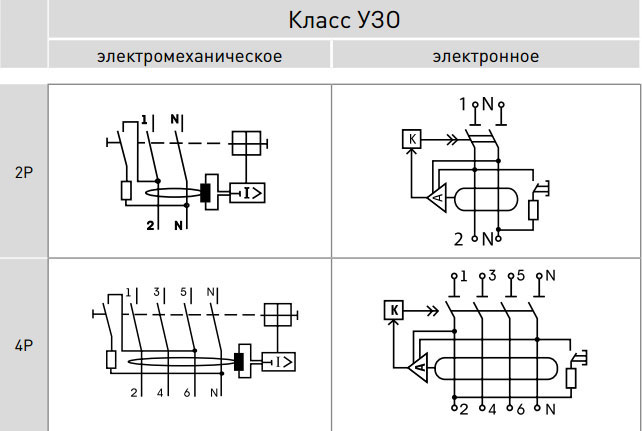
Electromechanical
Electromechanical RCDs are widely popular in use and are used in AC electrical circuits. What caused it? The fact that when a leak is detected, such a device will work, preventing sad consequences even at the most miserable voltage.
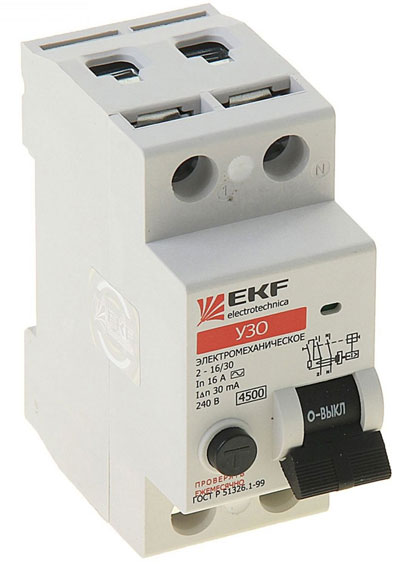
This type of RCD in many countries is considered the standard of quality and one that is mandatory for widespread use. No wonder, because such an RCD will work even if there is no zero in the network and can save someone's life.
Electronic
Such RCDs are easy to find in any construction market. Their difference from electromechanical ones is in the presence inside the board with an amplifier, which requires power to operate.
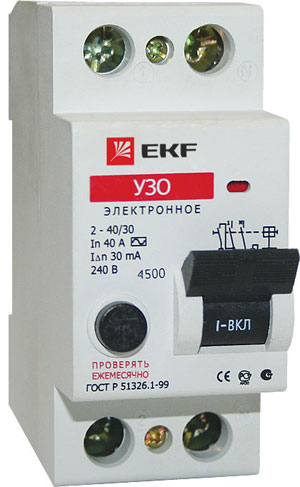
However, such RCDs, as already mentioned, have a huge drawback - it is not a fact that they will work with current leakage (it all depends on the voltage).If zero burns out, and the phase remains, then the risk of electric shock does not disappear.
NOTE! We are talking about the advantages and disadvantages of RCDs in general, and not specific models. If you are very "lucky", you can become the owner of a poor-quality RCD, both electromechanical and electronic.
selective
The main difference between a selective RCD and its “brothers” is the presence in the circuit of the time delay function for turning off the circuit that feeds the load, i.e. selectivity. Often this parameter does not exceed 40 ms. From this we conclude that selective devices are not suitable for protection against injury by direct contact.
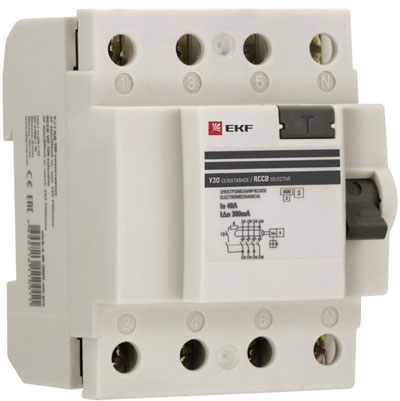
Another feature of selective aggregates is good resistance to reaction to current and voltage surges (the probability of false positives is almost zero).
fire fighting
As the name implies, such RCDs are used in the power supply systems of apartments and houses to prevent fires. However, they are not able to protect a person, since the leakage current for which they are designed is 100 or 300 mA.
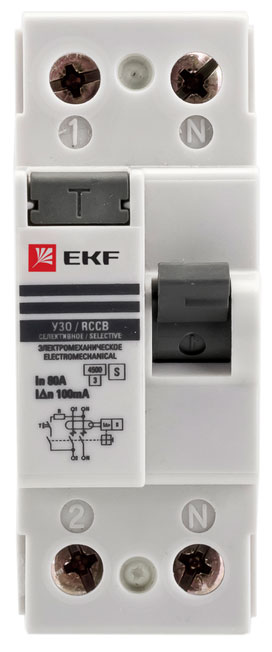
Typically, these units are installed in metering boards or floor switchboards. Their main task:
- input cable protection;
- protection of consumer lines in which differential protection is not installed;
- as an additional layer of protectionif the device below it suddenly did not work).
Number of poles
Since the RCD works by comparing the currents that penetrate the differential body, the number of poles in the unit coincides with the number of current-carrying conductors. In some cases, RCDs can be used with 4 poles to work in a two- or three-wire network.
At the same time, do not forget to leave free phase poles in stock.The unit will safely do its job not completely, but partially, which, in general, is unprofitable from a financial point of view, but possible.
Conclusion
Every day more and more household electrical appliances appear in our lives. Accordingly, the risk of current leakage increases, which sometimes even leads to death. If you are not killed by an electric shock, it will cause serious health problems or provoke a fire. From all these troubles there is one salvation - a protective shutdown device. We strongly advise you to install it at home, as they say, away from sin.
Similar articles:
